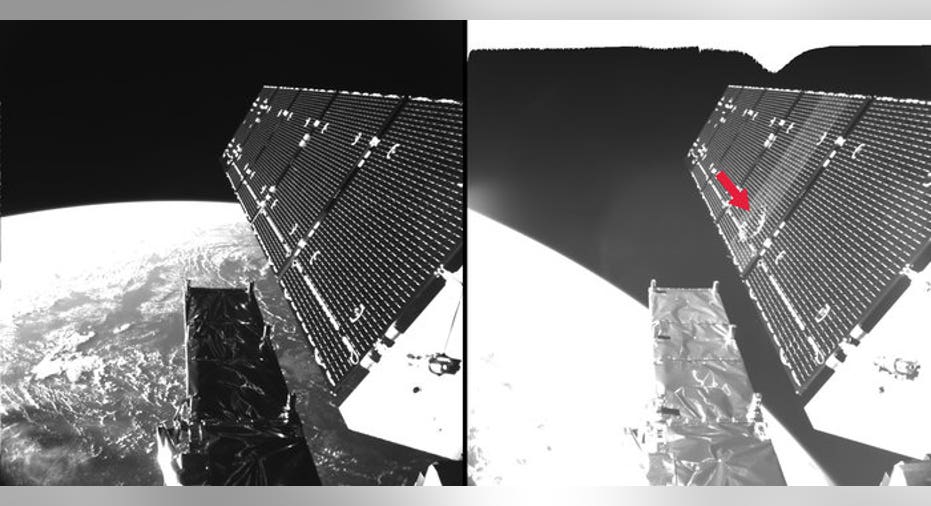Tiny particle blows hole in European satellite's solar panel

With its sights firmly fixed on Earth, Europe's eye in the sky never saw it coming.
A tiny piece of debris has punched a gaping hole in the solar panel of one of its Earth observation satellites, causing visible damage but not enough to affect its routine operations, the European Space Agency said Wednesday.
The unknown particle just a few millimeters big slammed into the back of a solar panel on Copernicus Sentinel-1A on Aug. 23. Using on-board cameras, engineers have determined that the hole is about 40 centimeters (16 inches) in diameter.
The European Space Agency said the loss of power caused by the strike is "relatively small" — less than 5 percent of the wing's usual output.
The incident highlights the danger that both natural and man-made debris poses to satellites and other spacecraft orbiting Earth.
The likelihood of such a strike is calculated at between 1:35 and 1:130 during the satellite's five-year lifetime, said Holger Krag, who heads the agency's space debris office.
Smaller, dust-sized particles hit satellites all the time, but this one was several magnitude's bigger, he said.
While the particle probably had a mass of less than one 1 gram (0.04 ounces), scientists calculated that it was traveling at up to 40,000 kilometers an hour (24,856 mph) when it hit Sentinel-1A.
The satellite was launched in 2014. It uses radar to track environmental changes such as sea ice cover, land use or oil spills.